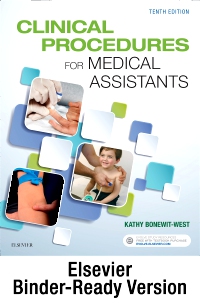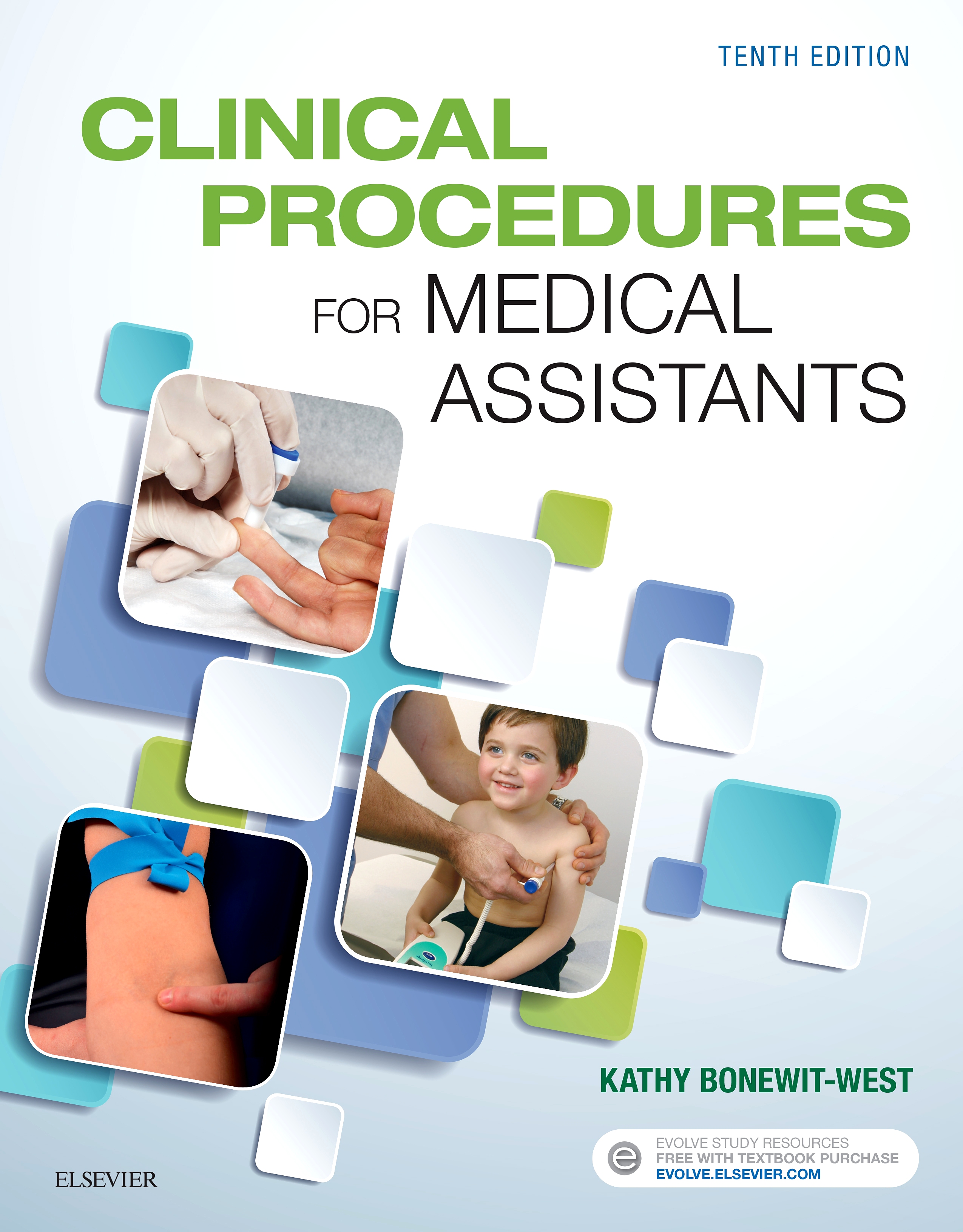
Clinical Procedures for Medical Assistants - Binder Ready, 10th Edition
Binder Ready

Help your students learn the foundational concepts and skills necessary to become successful clinical medical assistants! Written using clear and accessible language, Clinical Procedures for Medical Assistants, 10th Edition guides students through common office procedures such as taking vital signs, collecting and processing lab specimens, preparing patients for examinations, and assisting with office surgeries. This new edition is thoroughly updated throughout and includes content on elephant system for ear irrigation, influenza test, h. pylori test, digital scale for measuring weight, administration of rotavirus vaccine, along with new chapters on nutrition, emergency preparedness, and the medical record. Plus, with the addition of soft skills and critical thinking exercises, this comprehensive text prepares students to succeed in today’s fast-paced medical office.
Newer Edition Available
-
- NEW! Chapter on nutrition focuses on everything a medical assistant should know about the important field of nutrition.
- NEW! Chapter on emergency preparedness focuses on everything a medical assistant needs to know about emergency preparedness in the medical office.
- UPDATED chapter on emergency procedures and first aid ensures students have the most up-to-date information on this vital trend.
- UPDATED chapter on the medical record reviews how the MA maintains and interacts with the medical record.
- UPDATED content on the latest products and tests used in the medical office includes elephant system for ear irrigation, influenza test, digital scale for measuring weight, administration of rotavirus vaccine, procedure for measuring BP using an automatic BP cuff, and the new hazardous communication standard.
- NEW! SimChart® for the Medical Office (SCMO) connection ties Elsevier’s Educational EHR cases to the appropriate chapters and provides cohesion for the total curriculum solution.
- NEW! New certification examination review on Evolve help students use the textbook when studying for certification and will help them create a study plan.
- NEW! Professionalism and soft skills content emphasizes importance of professional interaction with patients and co-workers.
- UPDATED procedural photos provide students with the most current pictures of how to perform important clinical medical assisting procedures.
- Detailed learning objectives at the beginning of each chapter align with respective procedures to help guide the student/learner through the learning process (and ensure that they learned everything they should from the chapter).
- Over 120 procedures presented in a clear, illustrated, step-by-step format, with online videos showing 84 of the procedures in action.
- Student resources on the Evolve companion website offer a fun way for students to practice their medical assisting knowledge with animations, games matching exercises, and other interactive activities.
- Chapter outlines and learning objectives prepare students for the skills and concepts they will be learning.
- Charting examples help students understand the process for charting their own procedures.
- Patient Teaching boxes prepare students for effective communication, with detailed instructions on how to answer questions and how to explain medical concepts and procedures.
- What Would You Do? What Would You Not Do? case studies challenge students to apply their knowledge to realistic medical office situations — with a practitioner's response at the end of chapters.
- Putting It All Into Practice and Memories from Practicum boxes feature real medical assistants sharing personal, on-the-job experiences.
- Glossary of key terms gives students a quick reference guide for important terms and concepts.
-
- NEW! Chapter on nutrition focuses on everything a medical assistant should know about the important field of nutrition.
- NEW! Chapter on emergency preparedness focuses on everything a medical assistant needs to know about emergency preparedness in the medical office.
- UPDATED chapter on emergency procedures and first aid ensures you have the most up-to-date information on this vital trend.
- UPDATED chapter on the medical record reviews how the MA maintains and interacts with the medical record.
- UPDATED content on the latest products and tests used in the medical office includes elephant system for ear irrigation, influenza test, digital scale for measuring weight, administration of rotavirus vaccine, procedure for measuring BP using an automatic BP cuff, and the new hazardous communication standard.
- NEW! SimChart® for the Medical Office (SCMO) connection ties Elsevier’s Educational EHR cases to the appropriate chapters and provides cohesion for the total curriculum solution.
- NEW! New certification examination review on Evolve help you use the textbook when studying for certification and will help you to create a study plan.
- NEW! Professionalism and soft skills content emphasizes importance of professional interaction with patients and co-workers.
-
1: The Medical Record 2: Medical Asepsis and the OSHA Standard 3: Sterilization and Disinfection 4: Vital Signs 5: The Physical Examination, 6: Eye and Ear Assessment and Procedures 7: Physical Agents to Promote Tissue Healing 8: The Gynecologic Examination and Prenatal Care 9: The Pediatric Examination 10: Minor Office Surgery 11: Administration of Medication and Intravenous Therapy 12: Cardiopulmonary Procedures 13: Colon Procedures and Male Reproductive Health 14: Radiology and Diagnostic Imaging 15: Introduction to the Clinical Laboratory 16: Urinalysis 17: Phlebotomy 18: Hematology 19: Blood Chemistry and Immunology 20: Medical Microbiology 21: Nutrition - NEW 22: Emergency Preparedness - NEW 23: Emergency Medical Procedures and First Aid
APPENDICES A Medical Abbreviations
GLOSSARY INDEX


